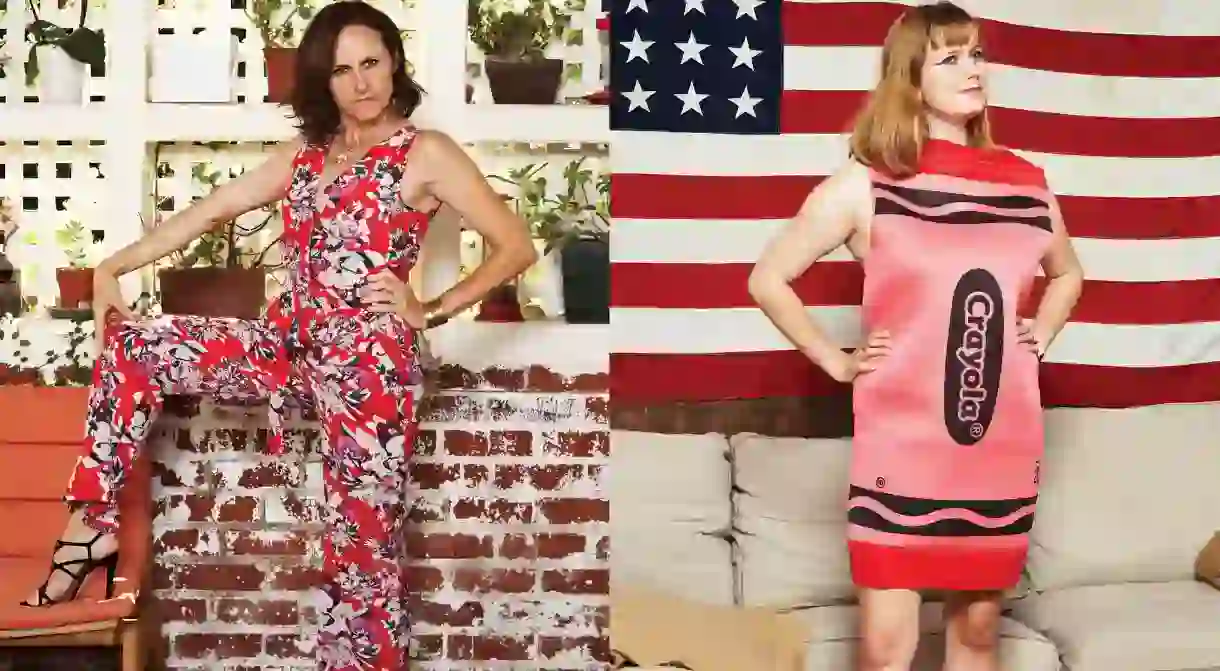New Rizzoli Book Celebrates Fashion Blunders

There are plenty of fashion books celebrating sartorial smash hits, and as such, telling you what to wear. A new book released March 28, from Rizzoli, I Actually Wore This: Clothes We Can’t Believe We Bought is not that book. The book’s writer, Tom Coleman, and its photographer, Jerome Jakubiec explain the fashion sense in celebrating bad taste.
Tom Coleman says, “While wasting my day as usual and scrolling through Amazon, I noticed there weren’t any funny books related to fashion… and since vampires and boy wizards were already taken, I went with this idea.”
Jerome Jakubiec says, “To be honest, I see my work here as a series of portraits. I’ve worked on this book for three years. I see this work as a clean slate. I’ve had some success in the past with photographs that were unequivocally fashion images. The root of it all is portrait photography to me. Portraiture is much more inclusive and it allows me to tell different stories. It’s all about vision; if someone wants to use my work to sell fashion or as portraits to illustrate other things, that’s great. At the end of the day, I hope people will see these photos as a bunch of portraits of people wearing interesting outfits.”

Jill Di Donato: How did you convince such stylish people—from the Bergdorf Goodman’s fashion director to the Savile Row Guv’nor—people whose reputations are built around dressing impeccably, to pose for a fashion portrait donning a fashion blunder?

Jerome Jakubiec: I think the concept is fun and non judgmental in its essence. I see it as a celebration of our free will. Everybody was a great sport. It’s humanizing and endearing to admit to making bad choices, fashion is no exception. Being influenced by the streets of New York City, I personally rarely -if ever- look at someone and think they look bad. I’m just not wired like that. I think that giving kudos just comes out of me more easily. The short answer is Tom Coleman did most of the casting and he must have done a great job at selling the whole idea.
Tom Coleman: We wouldn’t let them eat lunch till they put on the clothes. No, we didn’t do that. The book is meant to be funny so if people had a good sense of humor and could laugh at themselves they were totally into it. A lot of people were worried that their items weren’t extreme or funny enough.

JDD: What is the difference between style and fashion, in your opinion?
TC: Rip Taylor is style, ripped jeans is fashion.
JDD: Although some of the outfits are devoid of taste, as a photographer, you create compellingly fashionable portraits? How does that work? And what were some of the challenges you faced?

JJ: Thank you very much. It all comes down to respect for me. As a photographer, I interact with people for a very short moment sometimes. I start every interaction fresh. I try not to bring anything else than enthusiasm and experience to the table. I see taking a photograph as a collaboration with the subject. I know where it’s going and what I want visually and I let the subjects be themselves within those visual boundaries.
JDD: Is there really such a thing, in your opinion, as a cringe-worthy garment, or is style about the miracle of pulling something distasteful off?

TC: It’s only cringe-worthy in a funny way. Nobody will be chased through the streets by an angry mob for wearing a bedazzled jean jacket. From working on the book, it seems people have a lot of good memories associated with their regrettable garments. Maybe that’s why they’ve held on to them.
JJ: It’s all a matter of perspective, again, I don’t freak out over people’s outfits, ever. There are so many ways to dress, so many choices to be made. More power to the braves! Fashion is a mode of expression for a lot of people; I think it’s wrong to try to legislate that. If someone wants to wear seizure inducing colors the solution might just be to look away.

JDD: What were some of the most interesting fashion characters to profile and why?
TC: I guess people you’ve always wanted to meet and think are amazing. Cartoonist Roz Chast offered us oatmeal and introduced us to her pet birds. That made me very happy.
JDD: In your opinion, does clothing have a narrative arc?
TC: Yes, but I know how it ends and I don’t want to spoil it for anyone.













